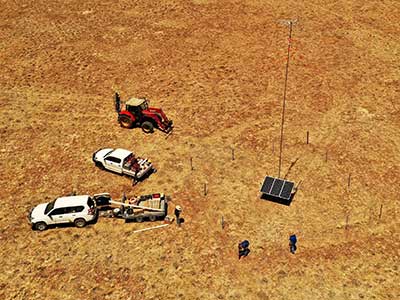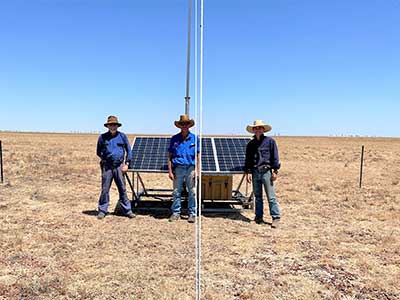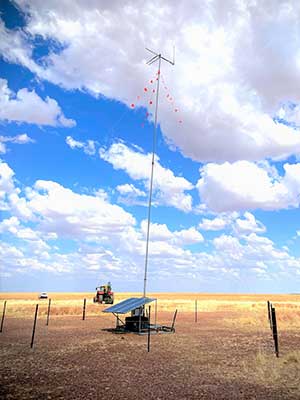Installing towers on the Barkly to identify calving events
Calf loss is a major economic issue for northern Australian beef producers and was recently estimated as being associated with annual inefficiency of $120 million. When monitoring calf loss in heifer groups located in the Barky region, approximately half the groups exceeded 15% and, in some situations, exceeded 30% (Schatz and Hearnden 2008).
Calf loss is a multifactorial problem with statistically significant associations between many factors and previously documented calf loss. However, due to difficulties locating dead calves in extensive conditions, limited evidence still exists for many factors, including those associated with increased cow-calf separation that potentially heightens the risk of mismothering, predation and dehydration. Unfortunately, there is still limited evidence on the strength of the association between calf loss and factors such as environmental conditions at the time of calving, the distance a cow calves from water, and paddock area.
The ‘Reducing calf loss from exposure’ and ‘Calf 48 Hour’ projects join a suite of Meat and Livestock Australia projects that rely on remote detection of calving events. This will increase our understanding of the causes of calf mortality in commercially managed herds, as well as evaluating emergent technology for detecting calving events.
During 2019 and 2020, the ‘Reducing calf loss from exposure’ study saw 214 GPS units fitted to heifers in the study, capturing over 2.5 million location records. Analysis of this data is ongoing.
Recently, staff from both the Northern Territory Department of Industry, Tourism and Trade, and Central Queensland University travelled to Avon Downs on the Barkly tableland to install a system to remotely monitor calving events. This included installing towers designed Katherine Research Station staff, fitting all 300 trial cattle with a GPS device, and fitting a subsample of 200 cows with a birthing sensor. The calf alert birthing sensor is an active device inserted intravaginally prior to calving (like inserting a cue-mate for artificial insemination) but cannot be detected through tissue and bone. When pushed out at the time of calving, the sensor is detected by land-based receivers, signalling a calving event.
The system relies on internet connection to support real-time flow of data and alerts of calving events. The connection was achieved by connecting to 3G phone coverage approximately 50km away using directional antennas attached to the towers.



